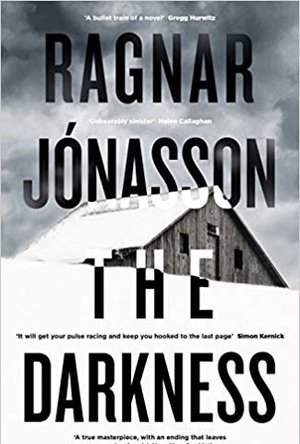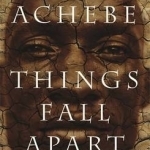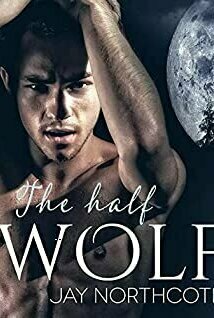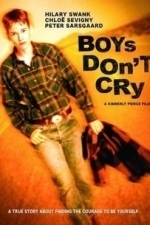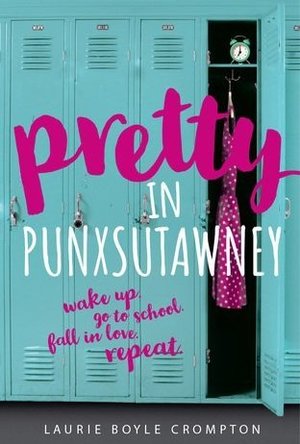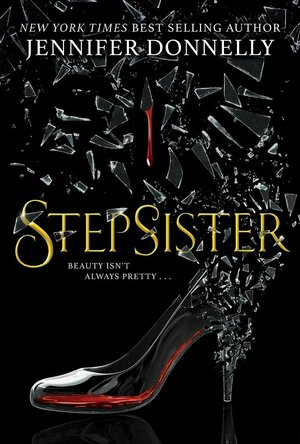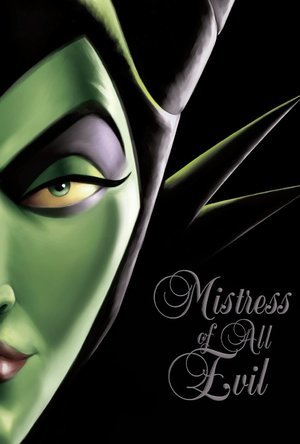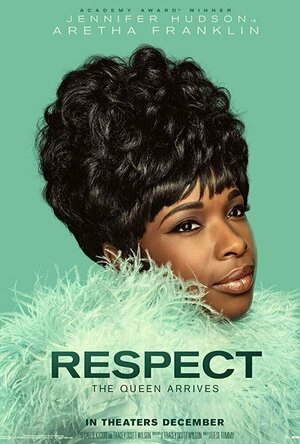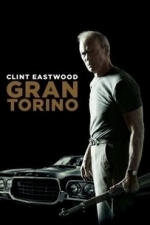Search
Sassy Brit (97 KP) rated The Darkness in Books
Jun 5, 2019
The Darkness by Ragnar Jónasson is an exciting Icelandic crime story, that’s dark, moody and realistic in both setting and characterisation.
The moment Detective Inspector Hulda Hermannsdóttir of the Reykjavik Police was rudely told to leave her job and take early retirement to make way for a younger replacement I knew I was going to love this book. From there on, I wanted her to succeed in anything she touched, if only to get her own back on her boss.
After negotiating whilst still in shock, the detective was told she could stay on, but only if she worked on one of the cold, unsolved cases during her final two weeks. The fact that her current cases and other work had already been distributed to other staff angered both me and Hulda!
Fortunately, Hulda kept her cool (much better than I did) and immediately decided which case to pick, since it was one she’d felt her colleague Alexander had never dealt with properly in the first place, but at the time she was not in the position to argue with him.
With two weeks in her position left she re-opened the cold case of the Russian girl and asylum seeker, Elena. eager to prove she didn’t kill herself by drowning but was murdered. And in the first 24 hours she knew more than what was put on Alexander’s original report. Go girl!
From here on, we follow Hulda’s investigation, in third person point of view, and we also hear the story of an unknown girl’s own narrative in first person.
Oh, how I loved Alexander’s reaction when he discovered Hulda looking into his closed case. If that’s not the sign of a guilty man then I don’t know what is! Brilliant!
In addition, when Hulda’s two weeks on the case were reduced to only one day by her angry boss, I raced through this book as if reading it faster would help her solve the case even quicker!
Hulda is one of my favourite ‘older’ characters, who has been through a lot, with secrets of her own, and I rooted for her throughout this story. She’s a courageous, hardworking and down-to-earth character who has faced a lot of prejudice during her career in the police force just for being a woman. The fact that Ragnar Jónasson has clearly emphasised this point right up to her last few days on the job, makes the sucker-punch of an ending even harder to deal with.
I loved every minute of this book, and even the sad, disappointing, yet shocking and annoying ending cannot sway me from awarding this book five stars. Confession Time; Want to know something else? I only picked this book up to have a brief look, with the thought of getting to it soon. But once I picked it up I couldn’t put the bloody thing back down again…
The moment Detective Inspector Hulda Hermannsdóttir of the Reykjavik Police was rudely told to leave her job and take early retirement to make way for a younger replacement I knew I was going to love this book. From there on, I wanted her to succeed in anything she touched, if only to get her own back on her boss.
After negotiating whilst still in shock, the detective was told she could stay on, but only if she worked on one of the cold, unsolved cases during her final two weeks. The fact that her current cases and other work had already been distributed to other staff angered both me and Hulda!
Fortunately, Hulda kept her cool (much better than I did) and immediately decided which case to pick, since it was one she’d felt her colleague Alexander had never dealt with properly in the first place, but at the time she was not in the position to argue with him.
With two weeks in her position left she re-opened the cold case of the Russian girl and asylum seeker, Elena. eager to prove she didn’t kill herself by drowning but was murdered. And in the first 24 hours she knew more than what was put on Alexander’s original report. Go girl!
From here on, we follow Hulda’s investigation, in third person point of view, and we also hear the story of an unknown girl’s own narrative in first person.
Oh, how I loved Alexander’s reaction when he discovered Hulda looking into his closed case. If that’s not the sign of a guilty man then I don’t know what is! Brilliant!
In addition, when Hulda’s two weeks on the case were reduced to only one day by her angry boss, I raced through this book as if reading it faster would help her solve the case even quicker!
Hulda is one of my favourite ‘older’ characters, who has been through a lot, with secrets of her own, and I rooted for her throughout this story. She’s a courageous, hardworking and down-to-earth character who has faced a lot of prejudice during her career in the police force just for being a woman. The fact that Ragnar Jónasson has clearly emphasised this point right up to her last few days on the job, makes the sucker-punch of an ending even harder to deal with.
I loved every minute of this book, and even the sad, disappointing, yet shocking and annoying ending cannot sway me from awarding this book five stars. Confession Time; Want to know something else? I only picked this book up to have a brief look, with the thought of getting to it soon. But once I picked it up I couldn’t put the bloody thing back down again…
Janeeny (200 KP) rated Things Fall Apart in Books
Jun 10, 2019
I was very confused by February’s ‘Penguin Reading Challenge’, as I don’t think I got one. Their February newsletter did recommend ‘Pride and Prejudice’ as a valentine read so potentially that may have been my classic recommendation for the month, however I’ve already read that one so I decided this month to go for January’s second recommendation of Chinua Achebe’s ‘Things fall apart’.
I don’t really know how to summarise this book without giving a lot away so I’m going to rely on Amazon –
Okonowo is the greatest warrior alive. His fame has spread like a bushfire in West Africa and he is one of the most powerful men of his clan.
But he also has a fiery temper. Determined not to be like his father, he refuses to show weakness to anyone – even if the only way he can master his feelings is with his fists. When outsiders threaten the traditions of his clan, Okonowo takes violent action. Will the great man’s dangerous pride eventually destroy him?
Again a Classic that did actually engross me. At the risk of sounding like a complete heel I was expecting to be lectured to by this book. Usually with Historical literature books of such high acclaim we encounter a lot of hidden and profound messages about our place in the world and how we treat others and the story can feel a bit dry. Also, with the other Historical fiction based in other countries I’ve read, I’ve appreciated the story, but they have essentially been based around problems exclusive to that era and culture, so it’s not really something I can relate to.
So oddly enough this little book set within a Nigerian tribe in the 1890s was actually quite relatable. Ok so maybe not many people can relate to a situation where you and a group of other men lead your foster son to a dark forest and kill him, but we can relate to making hard choices in life and letting down the ones we love.
You know as soon as you meet Okonowo that things are not going to go well for him, he is a prideful man quick to anger. He mistreats his wives and has high expectations of his children, and his intentions whilst well-meaning for his family are also misguided. Okonowo lives in a very superstitious village, and you can see that, after Okonowo does something that a close friend warns him against, that things will start to go bad from there. Things do not end well for Okonowo, as he doesn’t seem to learn or heed the warnings around him, but in the end you do start to sympathise with him a bit.
I think the best way to summarise the events in ‘Things fall apart’ is that whilst Okonowo’s problems are steered by his tribe’s beliefs and superstitions they are in essence problems that are relatable around the world.
I don’t really know how to summarise this book without giving a lot away so I’m going to rely on Amazon –
Okonowo is the greatest warrior alive. His fame has spread like a bushfire in West Africa and he is one of the most powerful men of his clan.
But he also has a fiery temper. Determined not to be like his father, he refuses to show weakness to anyone – even if the only way he can master his feelings is with his fists. When outsiders threaten the traditions of his clan, Okonowo takes violent action. Will the great man’s dangerous pride eventually destroy him?
Again a Classic that did actually engross me. At the risk of sounding like a complete heel I was expecting to be lectured to by this book. Usually with Historical literature books of such high acclaim we encounter a lot of hidden and profound messages about our place in the world and how we treat others and the story can feel a bit dry. Also, with the other Historical fiction based in other countries I’ve read, I’ve appreciated the story, but they have essentially been based around problems exclusive to that era and culture, so it’s not really something I can relate to.
So oddly enough this little book set within a Nigerian tribe in the 1890s was actually quite relatable. Ok so maybe not many people can relate to a situation where you and a group of other men lead your foster son to a dark forest and kill him, but we can relate to making hard choices in life and letting down the ones we love.
You know as soon as you meet Okonowo that things are not going to go well for him, he is a prideful man quick to anger. He mistreats his wives and has high expectations of his children, and his intentions whilst well-meaning for his family are also misguided. Okonowo lives in a very superstitious village, and you can see that, after Okonowo does something that a close friend warns him against, that things will start to go bad from there. Things do not end well for Okonowo, as he doesn’t seem to learn or heed the warnings around him, but in the end you do start to sympathise with him a bit.
I think the best way to summarise the events in ‘Things fall apart’ is that whilst Okonowo’s problems are steered by his tribe’s beliefs and superstitions they are in essence problems that are relatable around the world.

English Audio Books - Librivox
Book and Education
App
English Audiobooks - Librivox Learn English by reading and listening to "Audiobooks". If you know...
Debbiereadsbook (1617 KP) rated The Half Wolf in Books
Aug 9, 2021
a different take on shifters!
Independent reviewer for Archaeolibrarian, I was gifted the audio file of this book.
Quinn has lived in Wales his whole life. He knows of shifters and their nomadic lifestyle. He also knows that they suffer a lot of prejudice. Meeting Kellan, a wolf shifter who’s camped out in the valley, throws Quinn out of sorts: MORE out of sorts that he usually feels. Their attraction is obvious, but Kellan knows he can’t have Quinn. Quinn is human and wolves and humans do not mate, do they?
I usually write a bit about the book first, then the narration, but sometimes I can’t do that because my reviews often take a life of their own and this is one such time.
Hamish Long narrates. It's so nice to NOT have an American accent in your ear, you know? Long’s talent is only just coming to my attention, and I LOVED the narration of this book. His reading voice is deep and clear, and I had no trouble keeping up with the tale. His voices for the different characters were, I thought, spot on. With a mix of Welsh, non-descript English accents fitting for nomads and even an American accent thrown in, they were varied but accurate. The voice for the rogue wolf was major creepy, but very apt. Long gets across all of Quinn’s continuing changes and feelings, and all of Kellan’s need for Quinn, but knowing he can’t have him, and how much it breaks Kellan to realise that he might have to walk away.
My only niggle, and it’s a personal one, rather than a technical one, was that at first, I thought it was Quinn and Calum, not Kellan. But at some point, there was a marked difference in the name’s delivery, and I noticed Kellan more. Might just be me and my rubbish hearing though.
The story itself is well written and well delivered. Different enough to be interesting and to totally hold my attention from start to finish. And trust me on this, that’s a tricky thing right now! (major book funk!) While I twigged something was a little different in Quinn early on, how that all played out was not how I thought it would.
The rogue wolf was called an omega here, and that’s different to other wolf shifter books and I did like that some things were tipped on their head, I really did.
Not especially heavy on the smexy stuff, but plenty of steam! It’s not really needed here, I don’t think. Quinn and Kellan have passion and attraction and that comes across well enough. It is violent though, when dealing with the rogue and I think that was needed.
Long seems to have narrated a fair few of Northcote’s books, I might have a few more hours listening on my audio list now!
4 stars for the book
5 stars for the narration
4.5 overall but rounded UP for the blog.
**same worded review will appear elsewhere**
Quinn has lived in Wales his whole life. He knows of shifters and their nomadic lifestyle. He also knows that they suffer a lot of prejudice. Meeting Kellan, a wolf shifter who’s camped out in the valley, throws Quinn out of sorts: MORE out of sorts that he usually feels. Their attraction is obvious, but Kellan knows he can’t have Quinn. Quinn is human and wolves and humans do not mate, do they?
I usually write a bit about the book first, then the narration, but sometimes I can’t do that because my reviews often take a life of their own and this is one such time.
Hamish Long narrates. It's so nice to NOT have an American accent in your ear, you know? Long’s talent is only just coming to my attention, and I LOVED the narration of this book. His reading voice is deep and clear, and I had no trouble keeping up with the tale. His voices for the different characters were, I thought, spot on. With a mix of Welsh, non-descript English accents fitting for nomads and even an American accent thrown in, they were varied but accurate. The voice for the rogue wolf was major creepy, but very apt. Long gets across all of Quinn’s continuing changes and feelings, and all of Kellan’s need for Quinn, but knowing he can’t have him, and how much it breaks Kellan to realise that he might have to walk away.
My only niggle, and it’s a personal one, rather than a technical one, was that at first, I thought it was Quinn and Calum, not Kellan. But at some point, there was a marked difference in the name’s delivery, and I noticed Kellan more. Might just be me and my rubbish hearing though.
The story itself is well written and well delivered. Different enough to be interesting and to totally hold my attention from start to finish. And trust me on this, that’s a tricky thing right now! (major book funk!) While I twigged something was a little different in Quinn early on, how that all played out was not how I thought it would.
The rogue wolf was called an omega here, and that’s different to other wolf shifter books and I did like that some things were tipped on their head, I really did.
Not especially heavy on the smexy stuff, but plenty of steam! It’s not really needed here, I don’t think. Quinn and Kellan have passion and attraction and that comes across well enough. It is violent though, when dealing with the rogue and I think that was needed.
Long seems to have narrated a fair few of Northcote’s books, I might have a few more hours listening on my audio list now!
4 stars for the book
5 stars for the narration
4.5 overall but rounded UP for the blog.
**same worded review will appear elsewhere**
Darren (1599 KP) rated Boys Don't Cry (1999) in Movies
Jul 25, 2019
Story: Boys Don’t Cry starts with Teena (Swank) a young woman that wants to become a man, she uses the name Brandon to go around small American towns looking to pick up women, which has got her in trouble in the past.
On his latest trip she finds a new group of people, with Lana (Sevigny) taking her eye, with her friends and family including John (Sarsgaard), Tom (Sexton III), Candace (Goranson) all welcoming her into the group as Brandon, when her true identity is revealed there will be shocking consequence.
Thoughts on Boys Don’t Cry
Characters – Teena is a young woman that is preparing for her sex change, before that she is going around as a young man Brandon, trying to meet women. She meets a young lady in Lana, makes new friends, but she is on the run which will soon catch up with her. This is a based on a real person that is going through the difficult process of wanting to have a sex change. Lana is the young lady that Brandon takes a shine to, she lives the dead end life that she isn’t enjoying and Brandon brings a new feeling about it, though she is left in a difficult position when the truth comes out. John and Tom are two of the group of friends that happily welcome Brandon into their group, when they learn the truth, they will go to extreme measures to get revenge.
Performances – Hilary Swank went on to win an Oscar for her role in the film, you can see why because she is fantastic in the difficult role. Chloe Sevigny shows us jus how her supporting role she can make a huge impact in the film. Peter Sarsgaard and Brendon Sexton III both are disturbing in their roles in the film which shows just how they could make to truly disgusting human beings come to life.
Story – The story here follows a young lady preparing for a sex change, that would go around looking for women, only for her secret to come back when the prejudice locals can’t deal with people somebody they can’t explain in their lives. This is a film way before it own time, even though it is only 20 years old, it is based on the real crime which would easily have been given a bigger spotlight in todays world. we do step into the world of transgenders, which is always difficult to word correctly because it is a sensitive subject. What occurs in the film is surprising and shocking that you couldn’t see happening.
Biopic/Crime/Romance – The film uses the biopic side of the film to show the romance and crime against Brandon Teena a young transgender that is still wanting to figure out how to get through the sex change.
Settings – The film keeps us in the locations which shows how the smaller towns can operate and have mindsets that don’t accept people that are different.
Scene of the Movie – The first night together.
That Moment That Annoyed Me – The actions of the men.
Final Thoughts – This is one of the most difficult movies you will see, it has a sensitive subject on the table which will show the way people can act towards people.
Overall: Must watch movie.
On his latest trip she finds a new group of people, with Lana (Sevigny) taking her eye, with her friends and family including John (Sarsgaard), Tom (Sexton III), Candace (Goranson) all welcoming her into the group as Brandon, when her true identity is revealed there will be shocking consequence.
Thoughts on Boys Don’t Cry
Characters – Teena is a young woman that is preparing for her sex change, before that she is going around as a young man Brandon, trying to meet women. She meets a young lady in Lana, makes new friends, but she is on the run which will soon catch up with her. This is a based on a real person that is going through the difficult process of wanting to have a sex change. Lana is the young lady that Brandon takes a shine to, she lives the dead end life that she isn’t enjoying and Brandon brings a new feeling about it, though she is left in a difficult position when the truth comes out. John and Tom are two of the group of friends that happily welcome Brandon into their group, when they learn the truth, they will go to extreme measures to get revenge.
Performances – Hilary Swank went on to win an Oscar for her role in the film, you can see why because she is fantastic in the difficult role. Chloe Sevigny shows us jus how her supporting role she can make a huge impact in the film. Peter Sarsgaard and Brendon Sexton III both are disturbing in their roles in the film which shows just how they could make to truly disgusting human beings come to life.
Story – The story here follows a young lady preparing for a sex change, that would go around looking for women, only for her secret to come back when the prejudice locals can’t deal with people somebody they can’t explain in their lives. This is a film way before it own time, even though it is only 20 years old, it is based on the real crime which would easily have been given a bigger spotlight in todays world. we do step into the world of transgenders, which is always difficult to word correctly because it is a sensitive subject. What occurs in the film is surprising and shocking that you couldn’t see happening.
Biopic/Crime/Romance – The film uses the biopic side of the film to show the romance and crime against Brandon Teena a young transgender that is still wanting to figure out how to get through the sex change.
Settings – The film keeps us in the locations which shows how the smaller towns can operate and have mindsets that don’t accept people that are different.
Scene of the Movie – The first night together.
That Moment That Annoyed Me – The actions of the men.
Final Thoughts – This is one of the most difficult movies you will see, it has a sensitive subject on the table which will show the way people can act towards people.
Overall: Must watch movie.
Ivana A. | Diary of Difference (1171 KP) rated Pretty in Punxsutawney in Books
Jan 25, 2019
Pretty in Punxsutawney
What happens when you get stuck in time, re-living the first day in your new school?
Andie is a teenage girl, who loves movies. She is the type of person that knows exactly what to say… after it’s too late to say it. She is quirky, cutishly nerdy, and adorable in a silly way. And when she moves to Punxsutawney (I don’t think I’ll ever pronounce this town correctly), on the first day in her new school, she gets caught up in an endless loop of having to re-live those 24 hours again and again.
As in the movies, she is convinced that the curse can be broken with a true love’s kiss, she goes on a mission to get the boy. But is he the right one? And is true love what breaks the curse?
Not knowing how to end the loop, Andie tries to get first kiss with a guy she thinks is her true love, and when that doesn’t work, she suddenly tries to make the different types of people hang out together and realise that it doesn’t matter how you look like, to be a good person.
I really loved the idea of the loop in a high-school theme, and that was the main reason that I wanted to read this book really badly. I also loved that the main idea of this book was that looks don’t matter, and don’t judge a book by its cover, but I think that the author took this meaning way too far into the book, and it became too unrealistic, that it was laughable.
I enjoyed the layout of the different types of kids in the school, the jocks, the cheerleaders, the goths, the school-paper girls, the nerds. They were all described very realistically, and I enjoyed the times when we would realise that prejudice doesn’t matter. I can relate to a lot of this, because I was hanging out with both nerds and jocks in my high-school times, being a sports person and being a ‘’weirdo’’ that wants to read at the same time.
I also somehow managed to like the movie references, even though at moments, they are too overwhelming, and sometimes completely unrelated to the plot in place.
What I didn’t like, is how Andie kept changing in order to fit, how her behaviour changed, and her mindset during different days. I did not like this at all. I think that a person should always keep being themselves, no matter who they talk to. Doing the thinks she kept doing, only to be liked by one guy was miserable. Ladies – you are beautiful, no matter what you wear or how you do your hair. If that guy really likes you, he wouldn’t care about all these things and he would see within.
In retrospective, this was an enjoyable read. I am glad I read it, but somehow I think I might’ve been too old to read it now. But for you guys that are still in high-school, or love reading about high-school, this one is definitely worth your time.
Thank you to Netgalley and Blink, for providing me a free copy of this book in exchange for an honest review.
Andie is a teenage girl, who loves movies. She is the type of person that knows exactly what to say… after it’s too late to say it. She is quirky, cutishly nerdy, and adorable in a silly way. And when she moves to Punxsutawney (I don’t think I’ll ever pronounce this town correctly), on the first day in her new school, she gets caught up in an endless loop of having to re-live those 24 hours again and again.
As in the movies, she is convinced that the curse can be broken with a true love’s kiss, she goes on a mission to get the boy. But is he the right one? And is true love what breaks the curse?
Not knowing how to end the loop, Andie tries to get first kiss with a guy she thinks is her true love, and when that doesn’t work, she suddenly tries to make the different types of people hang out together and realise that it doesn’t matter how you look like, to be a good person.
I really loved the idea of the loop in a high-school theme, and that was the main reason that I wanted to read this book really badly. I also loved that the main idea of this book was that looks don’t matter, and don’t judge a book by its cover, but I think that the author took this meaning way too far into the book, and it became too unrealistic, that it was laughable.
I enjoyed the layout of the different types of kids in the school, the jocks, the cheerleaders, the goths, the school-paper girls, the nerds. They were all described very realistically, and I enjoyed the times when we would realise that prejudice doesn’t matter. I can relate to a lot of this, because I was hanging out with both nerds and jocks in my high-school times, being a sports person and being a ‘’weirdo’’ that wants to read at the same time.
I also somehow managed to like the movie references, even though at moments, they are too overwhelming, and sometimes completely unrelated to the plot in place.
What I didn’t like, is how Andie kept changing in order to fit, how her behaviour changed, and her mindset during different days. I did not like this at all. I think that a person should always keep being themselves, no matter who they talk to. Doing the thinks she kept doing, only to be liked by one guy was miserable. Ladies – you are beautiful, no matter what you wear or how you do your hair. If that guy really likes you, he wouldn’t care about all these things and he would see within.
In retrospective, this was an enjoyable read. I am glad I read it, but somehow I think I might’ve been too old to read it now. But for you guys that are still in high-school, or love reading about high-school, this one is definitely worth your time.
Thank you to Netgalley and Blink, for providing me a free copy of this book in exchange for an honest review.
Ivana A. | Diary of Difference (1171 KP) rated Stepsister in Books
Feb 3, 2020
<a href="https://diaryofdifference.com/">Blog</a>; | <a href="https://www.facebook.com/diaryofdifference/">Facebook</a>; | <a href="https://twitter.com/DiaryDifference">Twitter</a>; | <a href="https://www.instagram.com/diaryofdifference/">Instagram</a>; | <a href="https://www.pinterest.co.uk/diaryofdifference/pins/">Pinterest</a>;
<img src="https://i1.wp.com/diaryofdifference.com/wp-content/uploads/2019/05/New-blog-banner-28.png?w=560&ssl=1"/>;
When you are little, you watch a lot of movies. For us girls, life is filled with princesses and happy ever afters. With castles and knights in shining armours. And it’s always that the beautiful girls get their princes. Only beautiful girls get to be happy.
In this book, we get to really see the reality of what I have said above. It is all true. Only beautiful girls get the happy ever after. <b><i>But beauty doesn’t always mean pretty.</b></i>
In a world of prejudice and bullying, Stepsister by Jennifer Donnelly shows people, especially girls, that it is okay to be different. It is okay to be brave and follow your dreams. It is okay to be wild and strong willed. The people that truly love you, will always be by your side.
Meet Isabelle – Cinderella’s ugly stepsister. The girl that cuts her toes to get into the glass slipper. For those who didn’t know, the original Cinderella story by the Grimm brothers indeed has a scene where both ugly stepsisters cut their heel and toes, just to fit in the slipper and marry the prince.
<b><i>‘’The little toe was the hardest. Which didn’t come as a surprise. It’s often the small things that hurt the most – a cold glance, a cutting word, laughter that stops when you enter the room.’’</b></i>
Isabelle has never really wanted to be evil, but jealousy and mum’s pressure have been doing their own thing. When she gets a second chance in life though, she goes for it. She must complete an impossible task to find her happy ever after. And while doing so, she will find her true self.
<b><i>‘’Most people will fight when there is some hope for winning, no matter how slim. They are called brave. Only a few will keep fighting when all hope is gone. They are called warriors. Isabelle was a warrior once, though she has forgotten it.’’</b></i>
Be prepared to feel all emotions, and cheer for Isabelle, when she is fighting against the world. Relive the magic of an amazing retelling and be ready for an unforgettable adventure. What Jennifer has done to bring the Grimm feeling into a powerful story is to be admired. I will admire and cherish this book forever.
I am not a fan of re-reading books, but this will definitely be one book I will always come back to.
<b><i>‘’Algebra comes from Arabic. From al-jabr, which means ‘’the reunion of broken parts’’. Al-Khwarizmi believed that what’s broken can be made whole again if you just apply the right equation.’’
”If only there was an equation that could do the same for people.”</b></i>
Thank you to the team at ReadersFirst, for sending me a paperback copy of this book, in exchange for my honest review.
<a href="https://diaryofdifference.com/">Blog</a>; | <a href="https://www.facebook.com/diaryofdifference/">Facebook</a>; | <a href="https://twitter.com/DiaryDifference">Twitter</a>; | <a href="https://www.instagram.com/diaryofdifference/">Instagram</a>; | <a href="https://www.pinterest.co.uk/diaryofdifference/pins/">Pinterest</a>;
<img src="https://i1.wp.com/diaryofdifference.com/wp-content/uploads/2019/05/New-blog-banner-28.png?w=560&ssl=1"/>;
When you are little, you watch a lot of movies. For us girls, life is filled with princesses and happy ever afters. With castles and knights in shining armours. And it’s always that the beautiful girls get their princes. Only beautiful girls get to be happy.
In this book, we get to really see the reality of what I have said above. It is all true. Only beautiful girls get the happy ever after. <b><i>But beauty doesn’t always mean pretty.</b></i>
In a world of prejudice and bullying, Stepsister by Jennifer Donnelly shows people, especially girls, that it is okay to be different. It is okay to be brave and follow your dreams. It is okay to be wild and strong willed. The people that truly love you, will always be by your side.
Meet Isabelle – Cinderella’s ugly stepsister. The girl that cuts her toes to get into the glass slipper. For those who didn’t know, the original Cinderella story by the Grimm brothers indeed has a scene where both ugly stepsisters cut their heel and toes, just to fit in the slipper and marry the prince.
<b><i>‘’The little toe was the hardest. Which didn’t come as a surprise. It’s often the small things that hurt the most – a cold glance, a cutting word, laughter that stops when you enter the room.’’</b></i>
Isabelle has never really wanted to be evil, but jealousy and mum’s pressure have been doing their own thing. When she gets a second chance in life though, she goes for it. She must complete an impossible task to find her happy ever after. And while doing so, she will find her true self.
<b><i>‘’Most people will fight when there is some hope for winning, no matter how slim. They are called brave. Only a few will keep fighting when all hope is gone. They are called warriors. Isabelle was a warrior once, though she has forgotten it.’’</b></i>
Be prepared to feel all emotions, and cheer for Isabelle, when she is fighting against the world. Relive the magic of an amazing retelling and be ready for an unforgettable adventure. What Jennifer has done to bring the Grimm feeling into a powerful story is to be admired. I will admire and cherish this book forever.
I am not a fan of re-reading books, but this will definitely be one book I will always come back to.
<b><i>‘’Algebra comes from Arabic. From al-jabr, which means ‘’the reunion of broken parts’’. Al-Khwarizmi believed that what’s broken can be made whole again if you just apply the right equation.’’
”If only there was an equation that could do the same for people.”</b></i>
Thank you to the team at ReadersFirst, for sending me a paperback copy of this book, in exchange for my honest review.
<a href="https://diaryofdifference.com/">Blog</a>; | <a href="https://www.facebook.com/diaryofdifference/">Facebook</a>; | <a href="https://twitter.com/DiaryDifference">Twitter</a>; | <a href="https://www.instagram.com/diaryofdifference/">Instagram</a>; | <a href="https://www.pinterest.co.uk/diaryofdifference/pins/">Pinterest</a>;
Lottie disney bookworm (1056 KP) rated Mistress of All Evil: A Tale of the Dark Fairy (Villains #4) in Books
Sep 28, 2019
YES SERENA!
Mistress of Evil is precisely the book I wanted from the villain’s tales series: it had everything – an intriguing backstory; familiar characters as well as new ones who were pivotal to the plot; and of course, magic.
I couldn’t put this book down and I am so relieved that I can finally be super positive for the first time since Fairest of All.
Mistress of Evil takes place immediately after Poor Unfortunate Soul (these books have an order for a reason people!) and, with the odd sisters temporarily out of action, we learn that Maleficent must appeal to Circe and Nanny for assistance with a spell. However, it is soon revealed that Nanny, Maleficent and the odd sisters share a history.
What I loved most about this book is that Valentino spends a lot of time in Maleficent’s backstory, and it was evident that she took a lot of pride in the younger fairy she created. Maleficent is not 100% bad. Don’t get me wrong, she isn’t 100% good either, but the reader witnesses the circumstances that have made her this way. We observe abandonment, bullying and rejection but overall we witness prejudice against someone who is different and I feel it is this that really humanises Maleficent.
Familiar characters are also introduced; namely Flora, Fauna and Merryweather. Now, Merryweather has always been my favourite of the three fairies: something about her sarcastic and feisty personality calls to me. However, young Merryweather is a bit of a cow and, although I didn’t want to, I loved this twist. As usual, Valentino’s world is not black and white: if the good fairies had always been good, events may have turned out very differently.
Snow and her mother also play a role in the progression of the underlying story throughout all these tales: the one of the odd sisters. It wasn’t a complete surprise that Valentino brings one of her previous characters into the story, after all each tale has led into the next. However, it was really interesting to meet Queen Snow and glimpse at her life since we left her in Fairest of All. Also, a book from the odd sisters that possibly binds all our heroes and villains together is pure genius- particularly for someone who was obsessed with Once Upon a Time.
The level of detail in Valentino’s writing is superb. You can really picture the village in which Maleficent was raised- an experience that I haven’t felt in the previous tales. She also doesn’t neglect Aurora just because she is asleep but creates a dream world of mirrors that for some reason conjured images of Labyrinth for me. I also appreciated that, although snippets of the original story are included, they are just snippets- not a retelling.
I think it’s pretty clear that I loved this book. It wasn’t perfect (I still just don’t “get” Tulip and Popinjay and the timing at the start of the book was confusing) but it was pretty close! A prequel to Sleeping Beauty, complete with a fairy school, tree lords, dream worlds and fallouts that would make Jeremy Kyle wince? What more could you want?
A MASSIVE twist? You got it! I always knew no-one would be that angry over not being invited to a christening….
Mistress of Evil is precisely the book I wanted from the villain’s tales series: it had everything – an intriguing backstory; familiar characters as well as new ones who were pivotal to the plot; and of course, magic.
I couldn’t put this book down and I am so relieved that I can finally be super positive for the first time since Fairest of All.
Mistress of Evil takes place immediately after Poor Unfortunate Soul (these books have an order for a reason people!) and, with the odd sisters temporarily out of action, we learn that Maleficent must appeal to Circe and Nanny for assistance with a spell. However, it is soon revealed that Nanny, Maleficent and the odd sisters share a history.
What I loved most about this book is that Valentino spends a lot of time in Maleficent’s backstory, and it was evident that she took a lot of pride in the younger fairy she created. Maleficent is not 100% bad. Don’t get me wrong, she isn’t 100% good either, but the reader witnesses the circumstances that have made her this way. We observe abandonment, bullying and rejection but overall we witness prejudice against someone who is different and I feel it is this that really humanises Maleficent.
Familiar characters are also introduced; namely Flora, Fauna and Merryweather. Now, Merryweather has always been my favourite of the three fairies: something about her sarcastic and feisty personality calls to me. However, young Merryweather is a bit of a cow and, although I didn’t want to, I loved this twist. As usual, Valentino’s world is not black and white: if the good fairies had always been good, events may have turned out very differently.
Snow and her mother also play a role in the progression of the underlying story throughout all these tales: the one of the odd sisters. It wasn’t a complete surprise that Valentino brings one of her previous characters into the story, after all each tale has led into the next. However, it was really interesting to meet Queen Snow and glimpse at her life since we left her in Fairest of All. Also, a book from the odd sisters that possibly binds all our heroes and villains together is pure genius- particularly for someone who was obsessed with Once Upon a Time.
The level of detail in Valentino’s writing is superb. You can really picture the village in which Maleficent was raised- an experience that I haven’t felt in the previous tales. She also doesn’t neglect Aurora just because she is asleep but creates a dream world of mirrors that for some reason conjured images of Labyrinth for me. I also appreciated that, although snippets of the original story are included, they are just snippets- not a retelling.
I think it’s pretty clear that I loved this book. It wasn’t perfect (I still just don’t “get” Tulip and Popinjay and the timing at the start of the book was confusing) but it was pretty close! A prequel to Sleeping Beauty, complete with a fairy school, tree lords, dream worlds and fallouts that would make Jeremy Kyle wince? What more could you want?
A MASSIVE twist? You got it! I always knew no-one would be that angry over not being invited to a christening….
Bob Mann (459 KP) rated Respect (2021) in Movies
Oct 14, 2021
Re, re, re, re, ‘spect… Just a little bit.
What with holidays and Bond, it’s taken me a few weeks to get to see this Aretha Franklin biopic. But I finally caught it this week.
Plot Summary:
‘Re’ is a 10-year old growing up in relative middle-class affluence in Birmingham, Alabama with her high-profile preacher father C.L. Franklin (Forest Whitaker). She is blessed with a wonderful singing voice. We follow her career, as Aretha Franklin (Jennifer Hudson), through her struggles with controlling men and alcohol. This is against the backdrop of supporting the civil rights movement led by Martin Luther King (Gilbert Glenn Brown).
“Respect” Review: Positives:
Jennifer Hudson gives a tremendous performance as Franklin, delivering both the vocals and the acting admirably. (Apparently, the lady herself, before she died in August 2018, named Hudson as the best person to play her.)
Coming out of this movie, you have to admire Aretha Franklin’s legacy. Although there are moments when her ‘demons’ got the better of her (and the movie is unafraid to paint her in a negative light for these) she led a tumultuous life and yet was still a strong force for both feminism and equality. I think the movie highlights that admirably. “Have you lost your mind?” her father (Forest Whitaker) asks. “Maybe…. maybe I’ve found it.” she replies.
I loved the clip during the end titles (at a Carole King concert and in front of the Obamas) of Franklin well into her 70’s belting out “Natural Woman”. Classy stuff.
Negatives:
It’s long. Very long. Approaching Bond long.
There’s a curious ‘cookie-cutter-ness’ to these biopics of classic female singers (controlling and abusive men; alcohol/drug abuse; prejudice through sex/race; etc). (Would they even have emanated the same level of soul without all the grief? Perhaps not.) The similarities lead you to naturally compare this movie with “The US vs Billie Holiday“. The Billie Holiday story felt like it had a lot more grit and angst in it, making it, for me at least, more memorable. The script for “Respect” – although still rather episodic – flows better. Whilst still great, Hudson’s performance (an Oscar nomination perhaps?) doesn’t come close to the Oscar-nominated stellar job done by Andra Day.
I didn’t like how the script introduced us to its characters. For example, Ted White (Marlon Wayans) is introduced at a church barbeque. He’s painted as a disreputable character, but why? And you have no idea if he is supposed to be a famous singer, a songwriter, a promoter, or a producer (as in fact he is). As another example, Kelvin Hair plays Sam Cooke in the movie, but – unless I missed it – this doesn’t seem to be highlighted in the script.
Summary Thoughts on “Respect”
“Respect” is the feature debut for female director Liesl Tommy. And it’s certainly an ambitious target for a first-timer to shoot at, so ‘Respect’ for that! And it comes across as a solid and enjoyable biopic, not least to remind yourself of some of the classic tunes that Aretha Franklin belted out. At 145 minutes though, it takes its time telling its story, and I think a tighter, shorter film would have worked better.
Did I enjoy it though? Yes, I did. But it’s worth pointing out that the illustrious Mrs Movie Man – who normally begrudges every minute over 90 minutes in a movie – really loved this one.
Plot Summary:
‘Re’ is a 10-year old growing up in relative middle-class affluence in Birmingham, Alabama with her high-profile preacher father C.L. Franklin (Forest Whitaker). She is blessed with a wonderful singing voice. We follow her career, as Aretha Franklin (Jennifer Hudson), through her struggles with controlling men and alcohol. This is against the backdrop of supporting the civil rights movement led by Martin Luther King (Gilbert Glenn Brown).
“Respect” Review: Positives:
Jennifer Hudson gives a tremendous performance as Franklin, delivering both the vocals and the acting admirably. (Apparently, the lady herself, before she died in August 2018, named Hudson as the best person to play her.)
Coming out of this movie, you have to admire Aretha Franklin’s legacy. Although there are moments when her ‘demons’ got the better of her (and the movie is unafraid to paint her in a negative light for these) she led a tumultuous life and yet was still a strong force for both feminism and equality. I think the movie highlights that admirably. “Have you lost your mind?” her father (Forest Whitaker) asks. “Maybe…. maybe I’ve found it.” she replies.
I loved the clip during the end titles (at a Carole King concert and in front of the Obamas) of Franklin well into her 70’s belting out “Natural Woman”. Classy stuff.
Negatives:
It’s long. Very long. Approaching Bond long.
There’s a curious ‘cookie-cutter-ness’ to these biopics of classic female singers (controlling and abusive men; alcohol/drug abuse; prejudice through sex/race; etc). (Would they even have emanated the same level of soul without all the grief? Perhaps not.) The similarities lead you to naturally compare this movie with “The US vs Billie Holiday“. The Billie Holiday story felt like it had a lot more grit and angst in it, making it, for me at least, more memorable. The script for “Respect” – although still rather episodic – flows better. Whilst still great, Hudson’s performance (an Oscar nomination perhaps?) doesn’t come close to the Oscar-nominated stellar job done by Andra Day.
I didn’t like how the script introduced us to its characters. For example, Ted White (Marlon Wayans) is introduced at a church barbeque. He’s painted as a disreputable character, but why? And you have no idea if he is supposed to be a famous singer, a songwriter, a promoter, or a producer (as in fact he is). As another example, Kelvin Hair plays Sam Cooke in the movie, but – unless I missed it – this doesn’t seem to be highlighted in the script.
Summary Thoughts on “Respect”
“Respect” is the feature debut for female director Liesl Tommy. And it’s certainly an ambitious target for a first-timer to shoot at, so ‘Respect’ for that! And it comes across as a solid and enjoyable biopic, not least to remind yourself of some of the classic tunes that Aretha Franklin belted out. At 145 minutes though, it takes its time telling its story, and I think a tighter, shorter film would have worked better.
Did I enjoy it though? Yes, I did. But it’s worth pointing out that the illustrious Mrs Movie Man – who normally begrudges every minute over 90 minutes in a movie – really loved this one.
Phillip McSween (751 KP) rated Gran Torino (2009) in Movies
Mar 25, 2018
Original
A racist Korean War veteran has to deal with his own prejudice when a Hmong teenager tries to steal his car.
Acting: 8
Clint Eastwood comes out of the gates swinging in playing racist Walt Kowalski. I thought it was a daring role seeing as, even though the character had a strong prejudices, you were still supposed to somehow like and respect him. Clint walks that line finely and pulls the role off with that smooth ease I've seen in a number of his previous roles.
Special love to a strong supporting role from Chee Thao who plays the angry Grandma of the Hmong family. She hates Clint as much as he hates her and their chemistry makes for some hilarious scenes. She captures the role perfectly.
Beginning: 1
Characters: 10
Gran Torino features a rich array of characters with meaning and depth. Walt is a man set in his ways after the war hardened him, but you find his walls slowly tearing down as the movie progresses. He reluctantly lets in the people that he wouldn't normally and finds himself becoming closer to them than his own family. While his heart may have changed, I appreciated the fact that his mouth didn't. Walt, with his brutal honesty, always spoke what was on his mind at all times which was funny and refreshing at the same time.
Thao (Bee Vang) has his own internal struggle as he deals with getting his education while trying to take care of his family and still fit in with the men in his family. He wants to be different than his thug cousins but he's too much of a softy to stand up for himself. Thao and Walt end up on a collision course towards each other surrounded by a number of characters that have their own stories worth paying attention to.
Cinematography/Visuals: 10
A lot of scenes stuck out in my head when considering Gran Torino. From family dinners to one-off scenes with Walt and Thao, the film provides believable insight into Walt becoming closer to his "enemies" than his own family. The dinners were shot in a claustrophobic type of way. Thao's house was littered with people and you find a surrounded Walt trying to navigate his way through while steering clear of being social. The film as a whole was shot in a dark style indicative of looming danger. It's unnerving in a way, but effective at the same time.
Conflict: 10
Genre: 7
Memorability: 10
The hard dramatic shift in the film is like a gut punch, both jarring and unexpected. I appreciate when a film can change tones and still be effective. I also appreciate when films show racism from both sides of the fence. There's a refreshing sense of realism you get with Gran Torino that may be sacrificed in other films for the sake of getting a point across. In Torino, no one is innocent. No one is exempt.
I can't even count the number of one-liners that Walt provides throughout the span of the movie. My personal favorite: "Good day, puss cake." I have often considered how hilarious it would be to randomly say that to someone. There's still time...
Pace: 6
Definitely could have been improvement in the pacing department. The beginning starts off extremely slow before moving at a shaky pace. It finally levels out at about the half hour mark, but the damage had already been done for me at this point.
Plot: 10
Solid storyline from beginning to end that is both intriguing and unique. We are provided with an insight into a different culture in an endearing way that makes you smile.
Resolution: 5
Overall: 77
Gran Torino is an original film that succeeds with gritty realism and strong characters. A few tweaks, particularly a stronger ending, would have put the movie into a higher tier for me. Still a solid watch.
Acting: 8
Clint Eastwood comes out of the gates swinging in playing racist Walt Kowalski. I thought it was a daring role seeing as, even though the character had a strong prejudices, you were still supposed to somehow like and respect him. Clint walks that line finely and pulls the role off with that smooth ease I've seen in a number of his previous roles.
Special love to a strong supporting role from Chee Thao who plays the angry Grandma of the Hmong family. She hates Clint as much as he hates her and their chemistry makes for some hilarious scenes. She captures the role perfectly.
Beginning: 1
Characters: 10
Gran Torino features a rich array of characters with meaning and depth. Walt is a man set in his ways after the war hardened him, but you find his walls slowly tearing down as the movie progresses. He reluctantly lets in the people that he wouldn't normally and finds himself becoming closer to them than his own family. While his heart may have changed, I appreciated the fact that his mouth didn't. Walt, with his brutal honesty, always spoke what was on his mind at all times which was funny and refreshing at the same time.
Thao (Bee Vang) has his own internal struggle as he deals with getting his education while trying to take care of his family and still fit in with the men in his family. He wants to be different than his thug cousins but he's too much of a softy to stand up for himself. Thao and Walt end up on a collision course towards each other surrounded by a number of characters that have their own stories worth paying attention to.
Cinematography/Visuals: 10
A lot of scenes stuck out in my head when considering Gran Torino. From family dinners to one-off scenes with Walt and Thao, the film provides believable insight into Walt becoming closer to his "enemies" than his own family. The dinners were shot in a claustrophobic type of way. Thao's house was littered with people and you find a surrounded Walt trying to navigate his way through while steering clear of being social. The film as a whole was shot in a dark style indicative of looming danger. It's unnerving in a way, but effective at the same time.
Conflict: 10
Genre: 7
Memorability: 10
The hard dramatic shift in the film is like a gut punch, both jarring and unexpected. I appreciate when a film can change tones and still be effective. I also appreciate when films show racism from both sides of the fence. There's a refreshing sense of realism you get with Gran Torino that may be sacrificed in other films for the sake of getting a point across. In Torino, no one is innocent. No one is exempt.
I can't even count the number of one-liners that Walt provides throughout the span of the movie. My personal favorite: "Good day, puss cake." I have often considered how hilarious it would be to randomly say that to someone. There's still time...
Pace: 6
Definitely could have been improvement in the pacing department. The beginning starts off extremely slow before moving at a shaky pace. It finally levels out at about the half hour mark, but the damage had already been done for me at this point.
Plot: 10
Solid storyline from beginning to end that is both intriguing and unique. We are provided with an insight into a different culture in an endearing way that makes you smile.
Resolution: 5
Overall: 77
Gran Torino is an original film that succeeds with gritty realism and strong characters. A few tweaks, particularly a stronger ending, would have put the movie into a higher tier for me. Still a solid watch.
